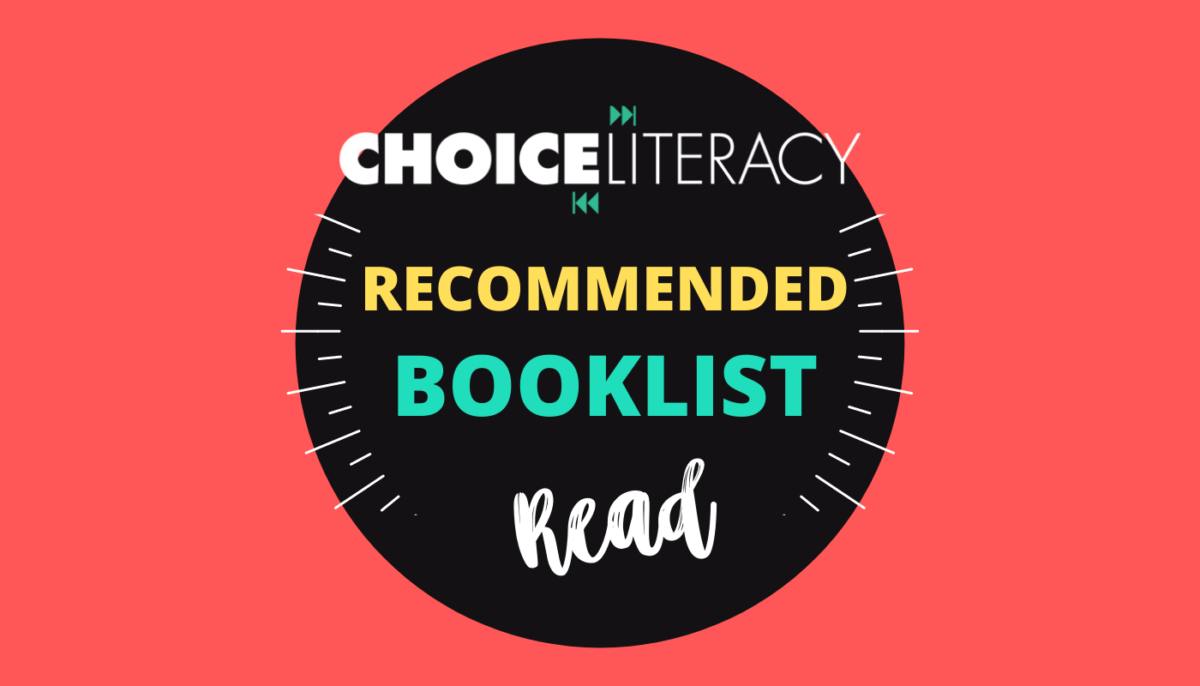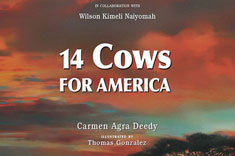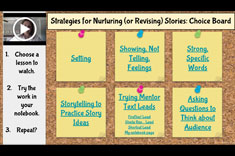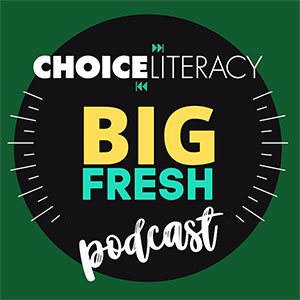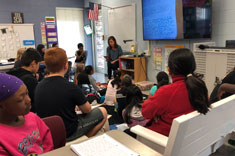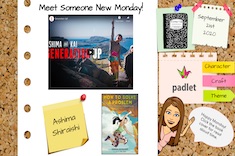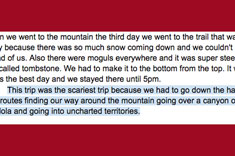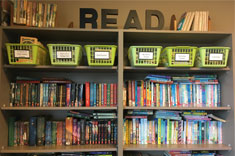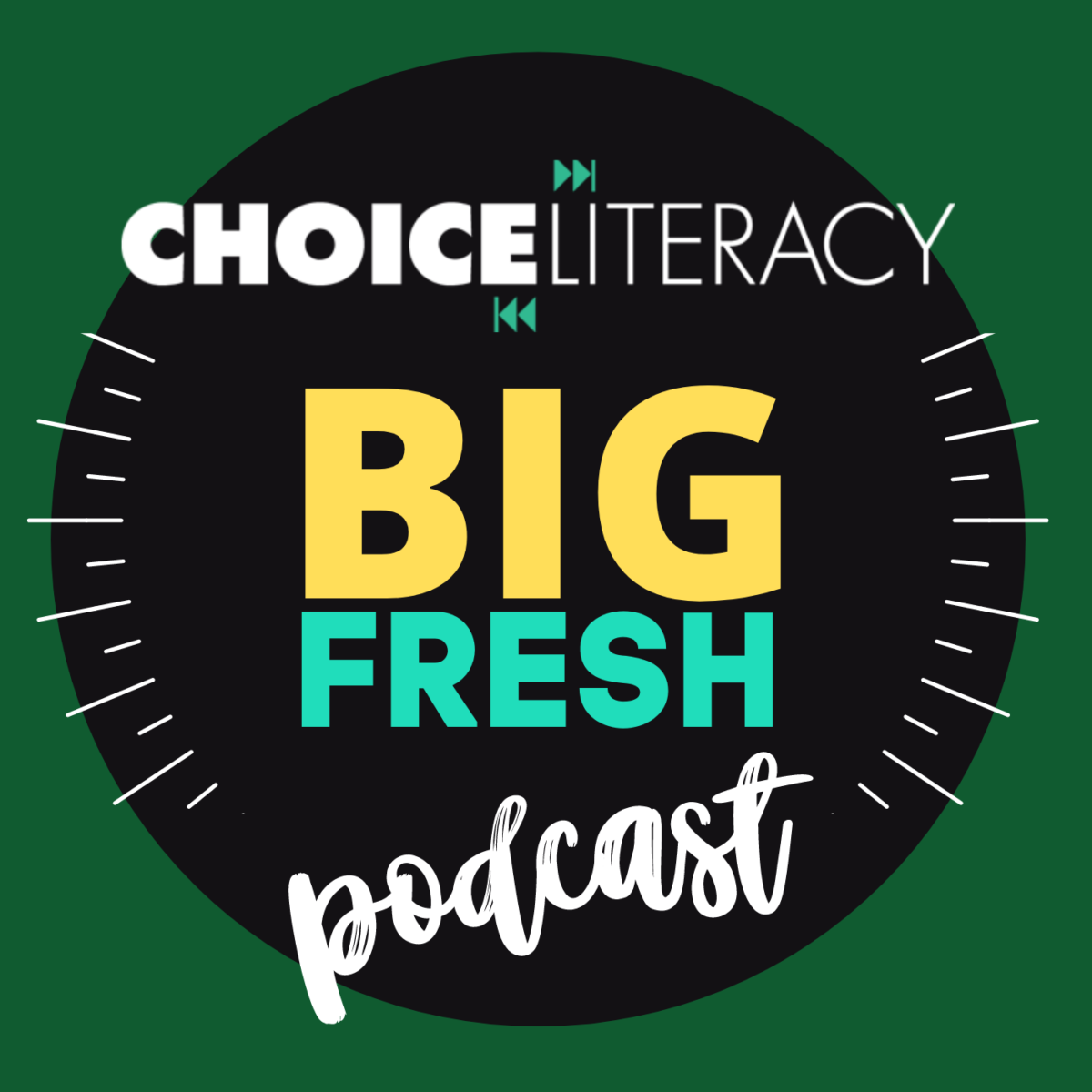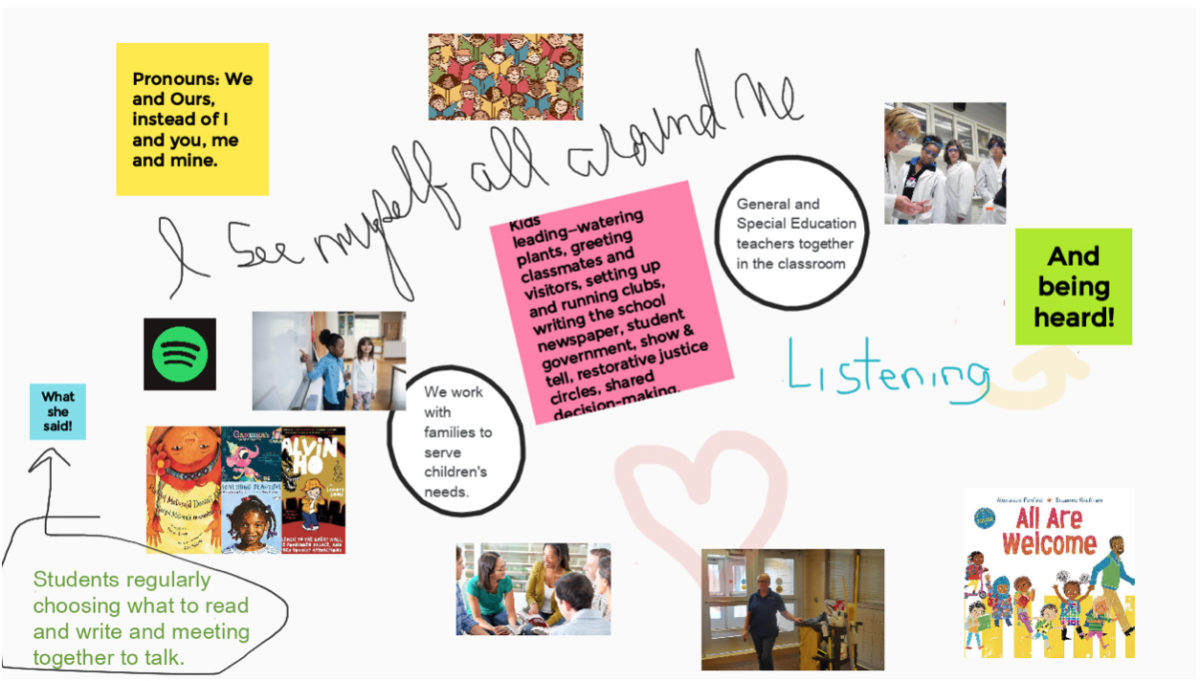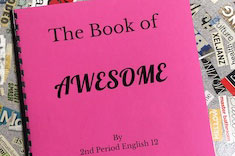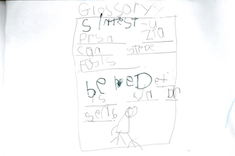Articles
Here is where you’ll find all the latest print features from our contributors. If you’d like to browse specifically by grade level, topic, or contributor, you can use the links in the right sidebar.
Latest Content
Picture Books That Affirm and Celebrate Students’ Identities
Stella Villalba shares picture books to celebrate and affirm students’ identities.
Field Notes: 6 Ways to Respond Remotely to Build a Community of Writers
Ruth Ayres observes a writing workshop that is remote. She reflects on the ways students offer feedback and how their community of writers is established.
Three Small Moves to Make a More Inclusive Classroom
Leigh Anne Eck reflects on three small moves she made to create a more inclusive classroom.
Laying the Foundation for an Equitable Classroom
Gretchen Schroeder shares the building blocks she uses to define equity for herself and her students, as well as a practical way to put them into action in her rural high school classroom.
Empowering Choice Podcast with Nawal Qarooni Casiano
Nawal Qarooni Casiano shares how to empower choice in kids leading minilessons on the podcast.
Actively Recognizing Biases
Tara Barnett and Kate Mills reflect on the ways they actively recognize their own biases and help students recognize their own.
Choice Boards for Writing Workshop
Tara Barnett and Kate Mills give a step-by-step guide for creating choice boards in writing workshop.
Writing Work Plans
Brian Sepe empowers students to make their own plans during writing workshop.
Extending Invitations in Workshop: Ways to Empower Student Choice
Dana Murphy suggests three ways to empower student choice in workshop and get more students to accept the invitations we offer.
Digital Reading Strategies
Mandy Robek reflects on her identity as a digital and print reader and offers strategies to support students reading digital texts.
Online Routines to Create Energetic Reading Communities
Melissa Quimby shares online routines to strengthen the class reading community.
Troubleshooting Difficulties When Writing a Big Idea in Memoir
Kate Mills and Tara Barnett pinpoint common difficulties in sixth-grade memoir. They share teaching points and student writing samples before and after revision.
Rotation of the Classroom Library
Inspired by a closet clean-out, Leigh Anne Eck considers the way a seasonal rotation is also good for classroom libraries.
Assessing Students Online: Small and Powerful Moves
Tammy Mulligan shares small and mighty moves when assessing students online.
Belonging in a School Community
Suzy Kaback thinks deeply about the concept of belonging as an essential part of building a school community.
Honoring Student Identity
Christy Rush-Levine considers how to communicate to all students that their presence and their identities are valued and appreciated.
Publishing Routines Podcast
Publishing routines is the theme of this week’s Big Fresh.
A Student Book of Awesome
Gretchen Schroeder’s high school students build community by creating a shared text of things they love.
Small-Group Instruction: Bookmaking
Brian Sepe shares one of his favorite activities for small groups of young learners: making books together.
Building Writer Relationships with Author Studies
Matt Renwick shares creative ways teachers in his school celebrate authors.
Book Series Joy
Bitsy Parks shares the way a series study enriches the reading lives of students and serves as an intervention to help readers grow.
Word Learning Podcast
Word learning is the theme of this week’s Big Fresh.
Making Something Together: Shared Writing Online
Tammy Mulligan finds shared writing is her go-to strategy for teaching young learners online.
Humor in Literacy Workshop Podcast
Humor in Literacy Workshop is the theme of this week’s Big Fresh.
Browse Content By
Type
Category
- Assessment Tools
- Big Fresh Archives
- Booklists
- Choice Numeracy
- Classroom Design
- Common Core
- Community Building
- Conferring
- Content Literacy
- Digital Literacy
- English Language Learners
- Equity
- Family Relations
- Free Samples
- Guiding Groups
- Leadership
- Literacy Coaches
- Mentor Texts
- Minilessons
- New Teacher Mentors
- Podcasts
- Poetry
- Quote Collections
- Reading Strategies
- Self Care
- Struggling and Striving Learners
- Talking and Listening
- Teacher Study Groups
- Teaching Reading
- Teaching Writing
- Word Study and Vocabulary
Author
- Melissa Quimby
- Nawal Qarooni
- Gwen Blumberg
- Julie Cox
- The Lead Learners
- Hannah Tills
- Josie Stewart
- Ruth Metcalfe
- Mallory Messenger
- Becca Burk
- Jodie Bailey
- Vivian Chen
- Mary Brower
- Tiffany Abbott Fuller
- Stephanie Affinito
- Ruth Ayres
- Leigh Anne Eck
- Heather Fisher
- Shari Frost
- Julie Johnson
- Suzy Kaback
- Gigi McAllister
- Shirl McPhillips
- Melanie Meehan
- Cathy Mere
- Debbie Miller
- Tara Barnett and Kate Mills
- Tammy Mulligan
- Dana Murphy
- Bitsy Parks
- David Pittman
- Brenda Power
- Heather Rader
- Matt Renwick
- Mandy Robek
- Christy Rush-Levine
- Gretchen Schroeder
- Jen Schwanke
- Brian Sepe
- Katherine Sokolowski
- Stella Villalba
- Jennifer Vincent
Grade Level
Choice Literacy Membership
Articles
Get full access to all Choice Literacy article content
Videos
Get full access to all Choice Literacy video content
Courses
Access Choice Literacy course curriculum and training


